

/en/access2010/more-query-design-options/content/
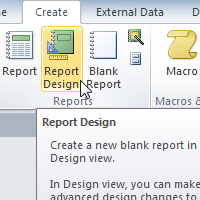
If you need to share information from your database with someone but don't want that person to actually work with your database, consider creating a report. Reports allow you to organize and present your data in a reader-friendly, visually appealing format. Access 2010 makes it easy to create and customize a report using data from any query or table in your database.
In this lesson, you will learn how to create, modify, and print reports.
Reports give you the ability to present components of your database in an easy-to-read, printable format. Access 2010 lets you create reports from both tables and queries.
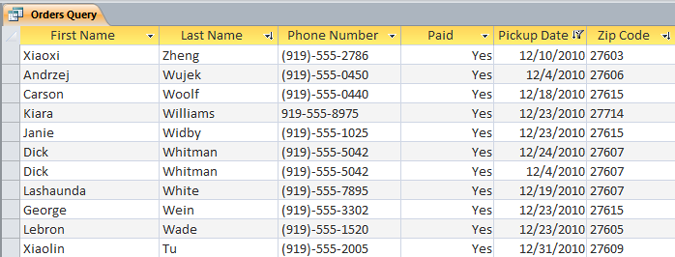 The query we'll use in our report
The query we'll use in our report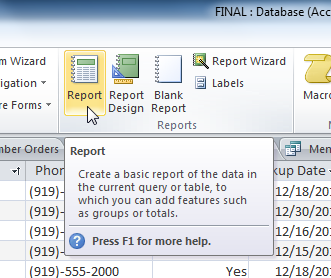 The Report command
The Report command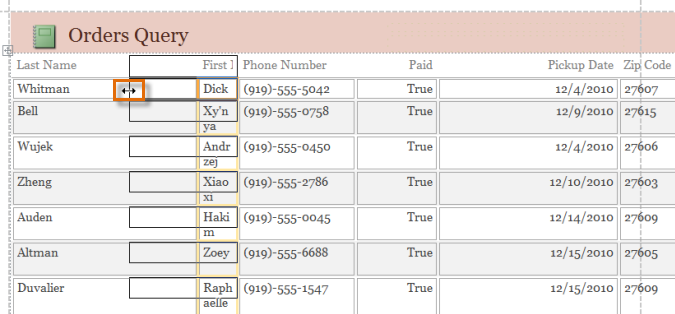 Resizing fields in the report
Resizing fields in the report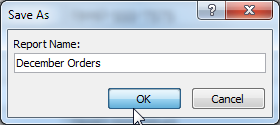 Saving and naming the report
Saving and naming the reportJust like tables and queries, reports can be sorted and filtered. Simply right-click the field you want to sort or filter, then select the desired sorting or filtering option.
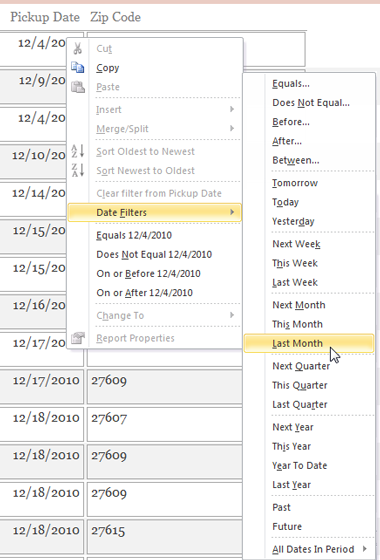 Filtering a report
Filtering a reportYou might find that your report contains some fields you don't really need to view. For instance, our report contains the Zip Code field, which isn't necessary in this list of orders. Fortunately, you can delete fields in reports without affecting the table or query where you pulled your data.
When you delete a field, be sure to delete its header as well. Simply select the header and press the Delete key.
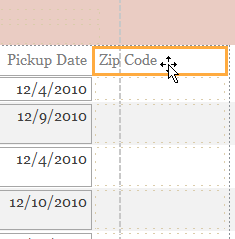 Deleting a field header after deleting the related field
Deleting a field header after deleting the related fieldWhile you can print reports using commands in Backstage view, you can also use Print Preview. Print Preview shows you how your report will appear on the printed page. It also allows you to modify the way your report is displayed, print it, and even save it as a different file type.
Click the buttons in the interactive below to learn about Print Preview.

To exit the Print Preview, simply click the Close Print Preview command. You will be returned to the last view you used.

The Export Options allow you to save your report in another format. This makes it possible to view your report in other programs.

With the Zoom options, you can decide how much of the report you would like to see on screen. You can also opt to view multiple pages at once.

Here, you can change the orientation of your report. Select either portrait (tall) or landscape (wide). You can also create columns or click the Page Setup command for more layout options.
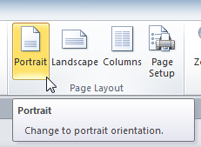
With the Page Size options, you can set the width of the margins on your report.
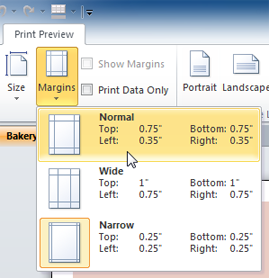
Click the Print command to print your report.

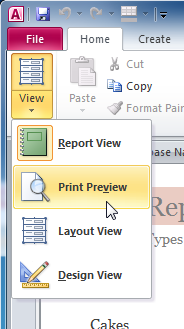 Switching to Print Preview view
Switching to Print Preview view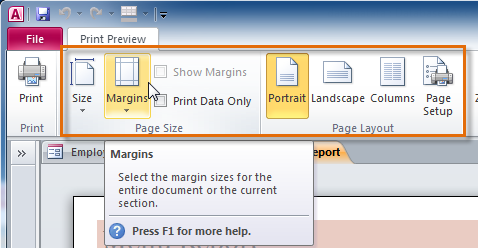 Page setup commands in Print Preview
Page setup commands in Print Preview The Print command
The Print commandYou can save reports in other formats so they will be viewable outside of Access. This is called exporting a file, and it allows you to view and even modify reports in other formats and programs.
Access offers options to save your report as an Excel file, text file, PDF, XPS file, email attachment, rich text file, or HTML document. Experiment with the different export options to find the one that best suits your needs.
 Report export options
Report export options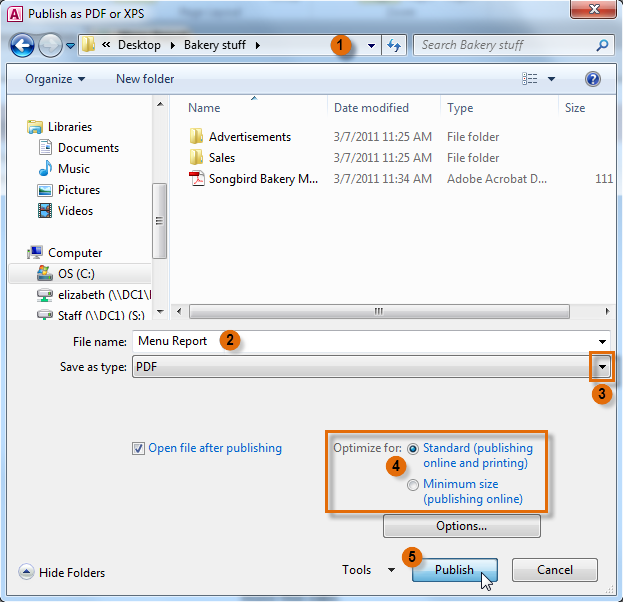 Saving the report as a PDF or XPS file
Saving the report as a PDF or XPS file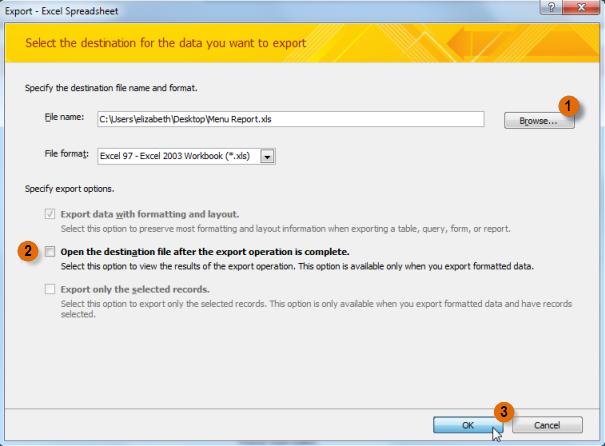 Saving the report as an Excel, Word, text, or HTML file
Saving the report as an Excel, Word, text, or HTML file
/en/access2010/advanced-report-options/content/